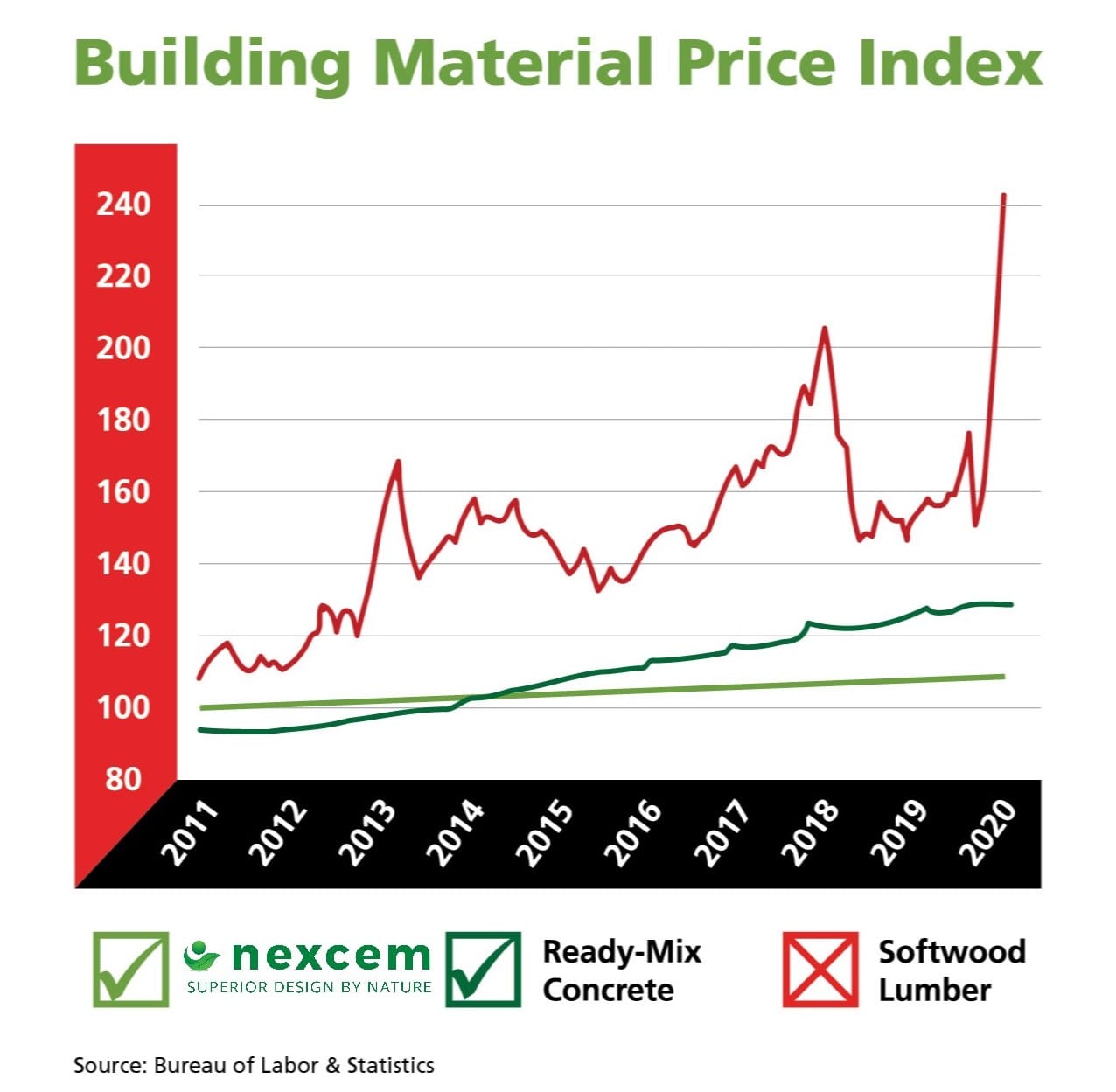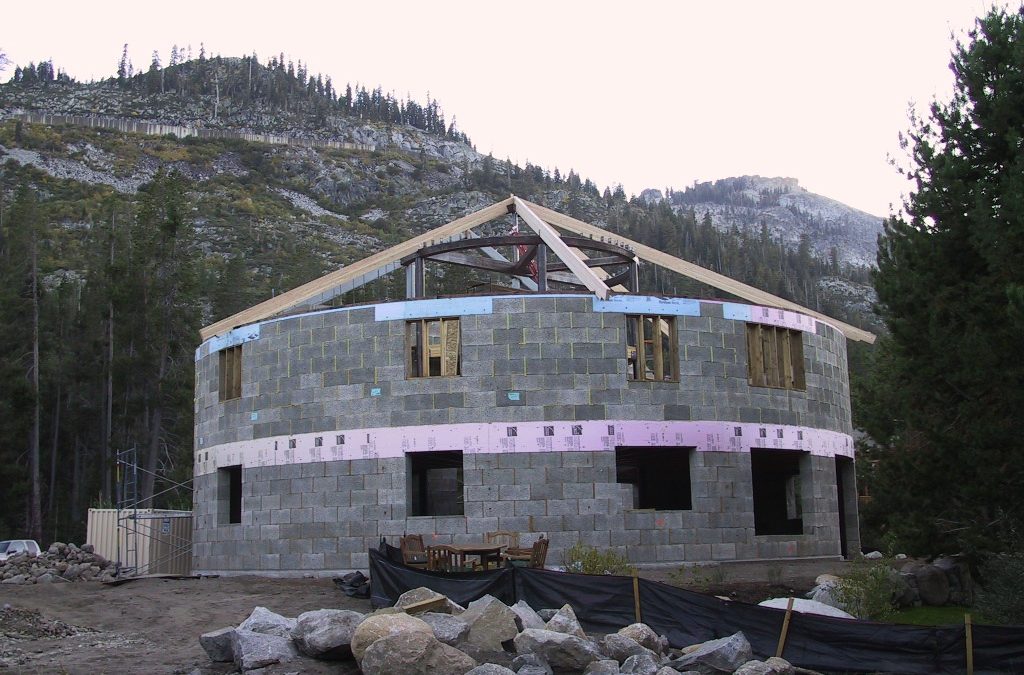Even as better building technologies such as insulated concrete forms (ICFs) emerged over time, the low cost of lumber always guaranteed its popularity. With cost of lumber now soaring, the only edge over ICFs, for the moment, vanished into thin air.
In this post, we’ll see how lumber’s rising costs have made high-performance materials, like ICF and concrete, the straightforward choice for builders and building owners.
What’s Happening With the Lumber Prices?
Lumber prices have always been more volatile than those of steel, concrete, and ICF. But this year, they’ve exploded like never before.
Spurred by the Covid-19 pandemic, the demand for lumber has surged, while the supply has plunged. Mills are working at a reduced capacity and struggling to meet the demand, driven by an exponential rise in home reno projects.
The result? A whopping 300% increase in the cost of softwood lumber. In contrast, concrete and ICF, the 2 primary components of an ICF wall, have largely followed the rate of inflation. You can see it in this graph:

What’s the Optimal Alternative to Wood-Framed Construction?
We’ve asked veteran home builder Tim Singbeil, what he thinks about the state of affairs. He’s a contractor behind over 50 high performance custom homes and here’s what he had to say:
“Lumber prices are skyrocketing and suppliers are telling me there is more yet to come. At this point my quotes for fully installed Nexcem homes are within 3% – 5% of building with lumber”
With lumber’s pricing advantage gone, ICF becomes by far a more efficient option. If you want to see how the prices line up for yourself – click here to get a free Nexcem quote from your drawings.
Now, you might say – what can do if I’m already stuck with a wood-frame design? The good news is that converting one to Nexcem ICF is easy. That said, a few tricks can smooth the conversion process over for you; we’ve compiled these below.
When Lumber Prices Soar, Always Choose A Concrete Core!
Here are a few things for you to consider if you’re adapting an existing, wood-frame home design to Nexcem ICF:
ICF walls are a bit thicker than their slender wood-framed peers. If you’re converting the latter to ICF, you’ll inevitably find yourself with extra thickness in the wall. To keep the net floor areas intact, move these few extra inches of thickness outward, while keeping the internal dimensions true to the original design.
Pay close attention to small interior spaces, such as bathrooms, stairwells, and laundry rooms. These spaces are often designed to the code-minimum floor areas. Introducing somewhat thicker ICF walls without due consideration can affect these rooms’ functionality and lead to a code violation.
In some jurisdictions, building codes prescribe a minimum distance between the corners of ICF walls and openings. Check your local code to be sure.
Nexcem ICFs come in a range of widths with a maximum of 16″ thick walls at R-36
Each thickness / insulation level / core width accommodates specific load and performance factors, and each has its own application in a home’s design. The thickest core is typically used in foundation walls, while the thinner variants work well in above-grade walls. Here are a few tips to help you maximize the interior floor areas when converting wood-framed plans to Nexcem:
- Stick to the minimum required core widths. This is typically a 6.5″ core for basements and a 5″ core for above grade
- Transition core widths at the floor level. Transitioning in the middle of a floor height is not structurally sound practice
Wrapping It Up
When it came to energy efficiency, airtightness, and installation speed, ICF walls have always left lumber in the dust. And now, lumber has lost its only edge – lower cost. At USD $900 per 1,000 board feet, lumber is now a premium building material with zero benefits to speak of. On the other hand, ICF and concrete have resisted market volatility and continue to offer predictable pricing, coupled with uncontested performance. There has never been a better time to build with ICF.
Please contact Nexcem professionals for more information on building a net-zero energy home.

